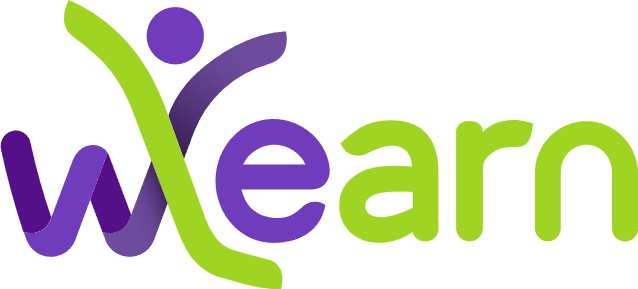Algebra II, First Half Unit
Class
About
This course begins with matrices and a review of the essentials of algebra. Then it presents linear functions; linear equations and inequalities; and linear equations in three variables. It concludes with the factoring of polynomials and the solving of quadratic equations.
Welcome to Algebra II, First Half Unit.
We are pleased that you selected Mizzou Academy's course to fulfill your unique educational needs. You are now a member of our large and diverse student body—a student body that comes from the United States and the world. To succeed at independent study, you will need to develop a study plan by setting realistic goals and working toward them. This page offers you an overview of the course and will help you achieve your goals. It contains an introduction to the course, as well as information about lessons, grades, and technical specifications.
The principal goal of this course is to lay a foundation for college algebra. The beginning of the course is a quick review of topics introduced in Algebra I. Do not hurry through this review. Make sure you understand all reviewed topics. If there is a topic that you are not completely confident about, spend more time on it. The remainder of the course builds on the foundation laid in Algebra I.
COURSE OVERVIEW
This course begins with a review of the essentials of algebra. Then it presents linear functions; linear equations and inequalities; and linear equations in three variables. It concludes with the factoring of polynomials and the solving of quadratic equations.
Prerequisite: Successful completion of Algebra I. Successful completion of Geometry is highly recommended.
After each lesson you should be able to:
Lesson 1
1.1 Identify number subsets.
1.2 Graph real numbers on a number line.
1.3 Simplify numerical expressions and evaluate algebraic expressions.
1.4 Use properties of real numbers.
1.5 Add, subtract, divide, and multiply real numbers.
1.6 Solve equations in one variable.
1.7 Translate word phrases into algebraic equations and word sentences into equations. 1.08 Solve word problems using an equation in one variable.
Lesson 2
2.1 Solve inequalities in one variable.
2.2 Solve combined inequalities.
2.3 Solve word problems using inequalities in one variable.
2.4 Solve inequalities involving absolute value.
2.5 Use a number line to solve inequalities involving absolute value.
2.6 Prove properties of real numbers.
2.7 Prove theorems about inequalities and absolute value.
Lesson 3
3.1 Solve problems involving open sentences in two variables.
3.2 Graph a linear equation in two variables.
3.3 Find the slope of a line and graph the line using its slope.
3.4 Write the equation of a line.
3.5 Solve a system of equations in two variables.
Lesson 4
4.1 Use systems of equations to solve problems.
4.2 Graph linear inequalities in two variables.
4.3 Find values of functions and graph functions.
4.4 Find equations of linear functions.
4.5 Determine whether a relation is a function.
Lesson 5
5.1 Simplify, add, and subtract polynomials.
5.2 Use laws of exponents.
5.3 Multiply polynomials.
5.4 Find the greatest common factor and least common multiple of integers and monomials.
Lesson 6
6.1 Factor differences of squares.
6.2 Factor perfect square trinomials.
6.3 Factor differences of cubes and sum of cubes.
6.4 Factor quadratic polynomials.
6.5 Solve a polynomial equation.
6.6 Solve word problems involving polynomial equations.
6.7 Solve polynomial inequalities.
Lesson 7
7.1 Use laws of exponents to simplify quotients.
7.2 Simplify expressions involving negative exponents and exponents of zero.
7.3 Use scientific notation and significant digits.
7.4 Simplify rational algebraic expressions.
7.5 Multiply and divide rational algebraic expressions.
Lesson 8
8.1 Add, and subtract rational expressions.
8.2 Simplify complex fractions.
8.3 Solve equations and inequalities having fractional coefficients.
8.4 Solve and use fractional equations.
Lesson 9
9.1 Find roots of real numbers.
9.2 Simplify radical expressions.
9.3 Simplify expressions involving sums of radicals.
Lesson 10
10.1 Simplify products and quotients of binomials that contain radicals.
10.2 Solve equations involving radicals.
10.3 Find decimal representations of real numbers.
10.4 Use imaginary numbers to simplify radical expressions.
10.5 Add, subtract, multiply and divide complex numbers.
REQUIRED MATERIALS
TEXTBOOK
Required: Algebra and Trigonometry: Structure and Method, Book 2. Richard G. Brown, Mary P. Dolciani, Robert H. Sorgenfrey, and Robert B. Kane. Evanston, IL: McDougal Littell Inc., 2000.
Suggested: Student Solutions Manual for Algebra and Trigonometry: Structure and Method, Book 2.
MATERIALS
- A basic calculator with a square root function is required for this course. A graphing calculator can be quite helpful in constructing graphs and tables, but it is not required.
- Microsoft Word
TECHNICAL REQUIREMENTS
The most up-to-date requirements can be found here:
- Computer Requirements
- Browser Requirements
- Proctoring Requirements
- Microphone (external or internal)
- Webcam
Additional requirements for the course are below:
- audio and video recording capabilities (e.g. smartphone, camera)
QUIZZES AND ASSIGNMENTS
QUIZZES
The graded quizzes for Lessons 1–3, 5–7, and 9–10 are computer evaluated; each consists of 20 multiple-choice questions that are worth 1 point each. Quizzes are taken online. After you submit them, you’ll quickly receive a report on how you did. Unlike exams, you may use any assigned readings, your notes, and other course-related materials to complete graded quizzes and assignments, though it is suggested you first attempt problems under exam-like conditions. Please note that graded quizzes cannot be retaken.
You must submit all quizzes in sequence (Lesson 1, then Lesson 2, etc.).
You may submit lessons at your own pace. However, passwords for the final exam will not be sent out before 6 weeks (42 calendar days from) from the date of the 1st lesson submission.
ASSIGNMENTS
The assignments for Lessons 4 and 8 are instructor graded; each consists of problem sets worth 24 points total. Each assignment provides step-by-step instructions on how to submit your work and more detailed scoring criteria. Be sure to check submitted work carefully for errors (e.g. spelling, grammar, and punctuation) as they may result in points being deducted. Canvas automatically allows you to resubmit assignments. However, you should not resubmit assignments without prior instructor approval.
EXAMS
You must take two formal, supervised examinations for this course: a midterm that follows Lesson 5 and a final that follows Lesson 10. Each exam is worth 175 points. Both exams consist of 35 multiple-choice questions worth 5 points each. You will not be allowed to use your textbook, notes, study guide, or any other reference materials during the exams. On the Midterm Exam you may NOT use a calculator, and on the Final Exam you are allowed a basic calculator only (no scientific or graphing caclulators allowed).
Your midterm and final exams are online. It is your responsibility to schedule your exams. See the proctored exams tab on the Helpful Resources page for more information about scheduling and preparing for exams.
Allow enough time (2 weeks) for our office to receive your request and communicate with your chosen exam site and proctor. Mizzou Academy has approved exam sites throughout the United States and around the world.
See "About Exams" in the policies section for additional information on exams at Mizzou Academy. Also, view the Exam Proctoring page on Mizzou Academy's website for all things proctoring related.
EXAM MATRIX
| Midterm Exam | Final Exam | |
|---|---|---|
| Lessons Covered | Lessons 1 - 5 | Lessons 6 - 10 |
| When to request an exam | At least 2 weeks in advance | At least 2 weeks in advance |
| Questions and type | 35 multiple-choice questions, 5 points each | 35 multiple-choice questions, 5 points each |
| Points possible | 175 points | 175 points |
| Time limit | 2.5 hours | 2.5 hours |
| What to bring to the exam site |
|
|
| More information | See the "About Exams at Mizzou Academy" section below for information about scheduling a proctor | See the "About Exams at Mizzou Academy" section below for information about scheduling a proctor |
GRADES
Your final grade will be based on the number of points you earn on quizzes and exams.
You will be able to see your exam percentage in the "Exams" column in your grade book.
The following grading scale applies only to students who meet this standard:
| Grade | Percentage |
|---|---|
| A | 90–100 |
| B | 80–89 |
| C | 70–79 |
| D | 60–69 |
| F | 0–59 |
After completing the course, unofficial transcripts will be available in the Tiger Portal. See this page for information on requesting official transcripts.




